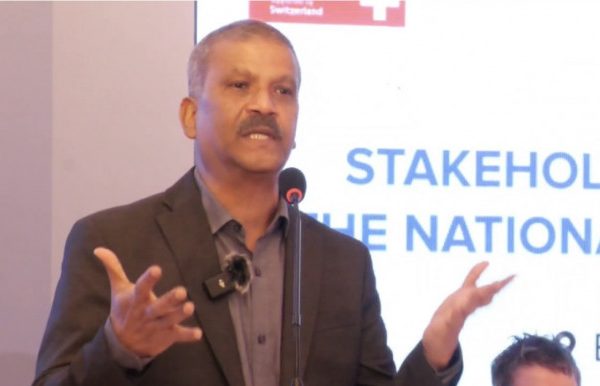Fear and panic: The dark side of social media
- Update Time : Tuesday, July 9, 2024

TDS Desk:
From 4 July onward, the fear of children going missing spread like wildfire.
The news of 35 children who had gone missing in 48 hours across the country was circulating at warp speed across Facebook pages. Parents were concerned, and so were ordinary people.
Conspiracy theories started brewing like “madrasa students are going missing” or “a new organ harvesting gang is active”.
But as journalists began investigating, it became clear that the cases of missing children were not something new, and most of the children were found a few days later. There were some cases where the children were still missing but the number is nowhere near 35.
Dhaka Metropolitan Police (DMP) Additional Commissioner (Crime and Operations) Khandaker Mohid Uddin said, “DMP had no evidence of 35 children going missing within 48 hours.”
He assured, “In most cases, the children came back to their families within a short time.”
This is not to take away from the seriousness of children going missing, regardless of what number and how prevalent it is across the world. But how this information – which can be understood as a half-truth at best – convinced social media users of a new threat at large is important.
WHAT RUNS THE FEAR-MONGERING MILL ON SOCIAL MEDIA?
Qadaruddin Shishir, Fact Check Editor at AFP and a Disinformation Researcher, said, “I, along with some of my journalist friends, called some of the victims at random. So far, we have contacted 25 missing children’s families, and we have found that 19 of them have returned. Yet, some of their ‘missing’ news is still floating on Facebook.”
So, it is evident that people have fallen into a rumour mill – inadvertently becoming part of a fear-mongering project. And this is not just for rumours or disinformation. It works the same for actual information as well.
“When the news of Russell’s Viper first broke out, the media houses chased the news – not wanting to fall behind [their media competitors]. Before social media, only the readers of the newspaper or viewers of the [TV news] channels would know about it. Now, everyone sees the latest trending news,” explained Shishir.
Additionally, it is fuelled by the people’s urge to participate in the latest trend.
“When we see something new getting traction on social media, we also want to be a part of it lest we be left out,” he added, “It works the same way with fake news. It is a social phenomenon.
Moreover, when we see people seeking help online, we tend to share that post out of good faith. We hope that our shares may help them get assistance. Usually, blood donation request posts, missing children posts or animal rescue posts get more attention and shares than usual.
“That’s why we see anti-vax discussions trending on Facebook every now and then,” Shishir added.
Anti-vaccine misinformation surged during Covid-19.
Then there was mass fear peddled by social media users when rumours began to surface that a gang was abducting people and beheading them for sacrifice to the Padma Bridge.
Shishir said, “Disinformation regarding religious, political or social issues is a very common phenomenon worldwide. People who crave attention use these issues to gain visibility.
“Also, some people exploit the vulnerable mental states of others to gain some clout. Since social media is also a source of revenue, some content creators peddle conspiracy theories to earn more money,” he added.
This is not the first time something like this happened.
From seeing Delwar Hossain Sayeedi on the moon to the recent Russell’s Viper scare, we have seen that social media has repeatedly been used to dupe people into mindless panic.
Minhaj Aman, the lead researcher at Dismislab.com, an independent online verification and research platform, said that the algorithm is making it seem like more children are going missing than they really are.
Also, he thinks that these types of scary rumours are inherently more frequent than we might realise. “We have seen similar cases in India as well. This fear-mongering is nothing new,” he said. “We have seen a similar rumour in 2019 [referring to the sacrificial rumour for Padma Bridge]. Facebook’s algorithm was not so strong back then, yet the rumour spread, as such scares are quite common.”
In the case of the missing children viral news, “21 of the 28 missing children were from Qawmi Madrasas. There, children often run away to escape from their studies. It is very common. That’s why the rumour of a gang targeting madrasa students has gained momentum. In reality, it is the repetitive algorithm of Facebook at play,” Shishir explained.
By repetitive Facebook algorithm we mean that once we see something and interact with it on social media, the algorithm works to keep suggesting similar content to us. So much so, that it feels like it’s everywhere – even though that may not be the case in reality.
The rumours (mentioned earlier) which spread and caused fear and/or panic were not baseless – meaning there was some truth to it. These half-truths were exaggerated, and in some cases done so egregiously, and fed off the social media users’ callous tendency to spread misinformation. These “rumours” are essentially misinformation.
Sayeedi on the moon rumour, however, was an outlier – a case of disinformation.
“So, we should fact-check everything we see on Facebook first. Otherwise, it is very easy to fall victim to such rumours,” said Minhaj Aman.















